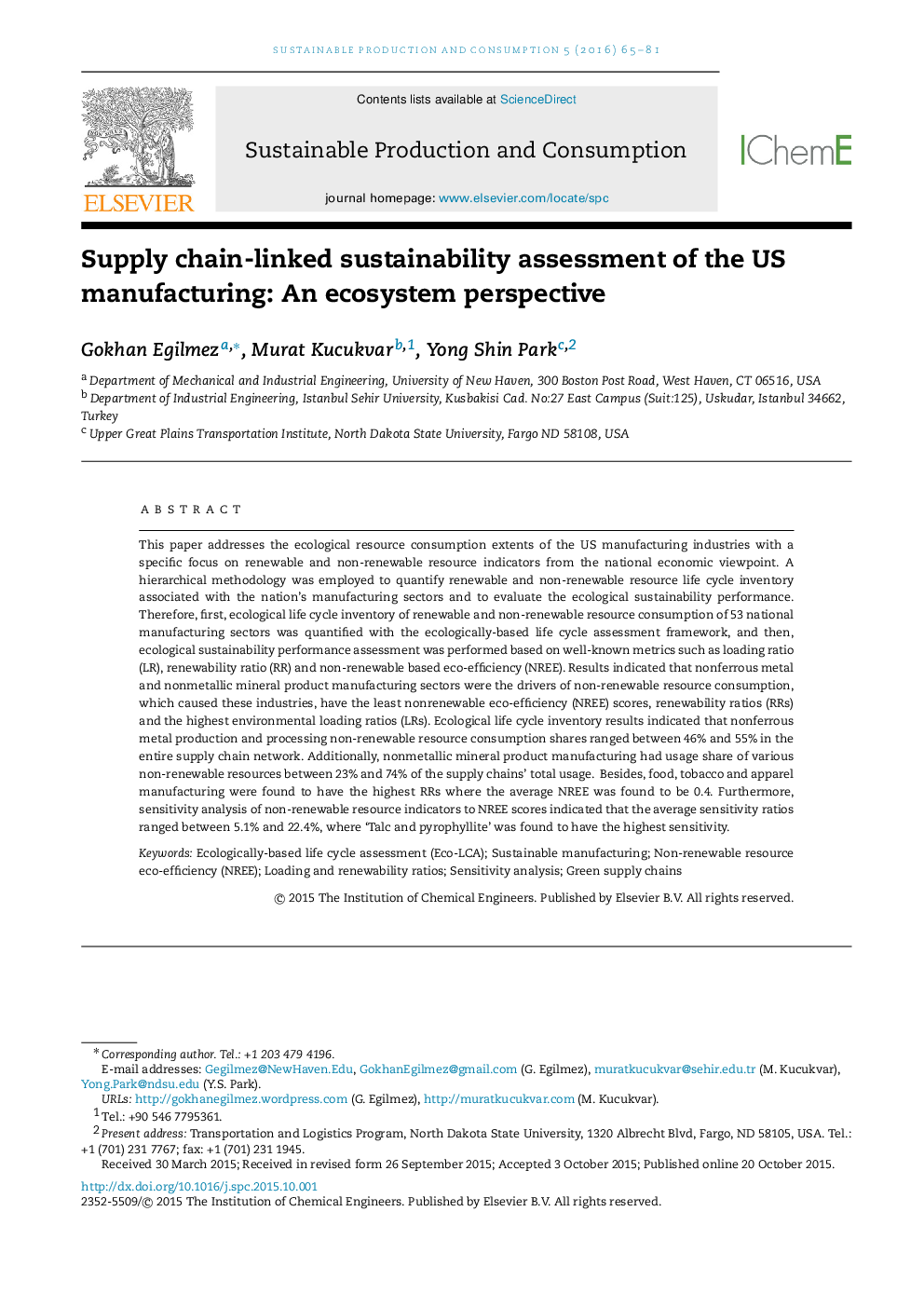| Article ID | Journal | Published Year | Pages | File Type |
|---|---|---|---|---|
| 694287 | Sustainable Production and Consumption | 2016 | 17 Pages |
•Ecological resource consumption of US manufacturing activities is studied.•An integrated Eco-LCA and ecological performance assessment framework is utilized.•Ecological cumulative exergy consumption (ECEC) is used as the scope of LCA.•Nonferrous metal and nonmetallic mineral product manufacturing were found to be the drivers of nonrenewable ECEC impacts.
This paper addresses the ecological resource consumption extents of the US manufacturing industries with a specific focus on renewable and non-renewable resource indicators from the national economic viewpoint. A hierarchical methodology was employed to quantify renewable and non-renewable resource life cycle inventory associated with the nation’s manufacturing sectors and to evaluate the ecological sustainability performance. Therefore, first, ecological life cycle inventory of renewable and non-renewable resource consumption of 53 national manufacturing sectors was quantified with the ecologically-based life cycle assessment framework, and then, ecological sustainability performance assessment was performed based on well-known metrics such as loading ratio (LR), renewability ratio (RR) and non-renewable based eco-efficiency (NREE). Results indicated that nonferrous metal and nonmetallic mineral product manufacturing sectors were the drivers of non-renewable resource consumption, which caused these industries, have the least nonrenewable eco-efficiency (NREE) scores, renewability ratios (RRs) and the highest environmental loading ratios (LRs). Ecological life cycle inventory results indicated that nonferrous metal production and processing non-renewable resource consumption shares ranged between 46% and 55% in the entire supply chain network. Additionally, nonmetallic mineral product manufacturing had usage share of various non-renewable resources between 23% and 74% of the supply chains’ total usage. Besides, food, tobacco and apparel manufacturing were found to have the highest RRs where the average NREE was found to be 0.4. Furthermore, sensitivity analysis of non-renewable resource indicators to NREE scores indicated that the average sensitivity ratios ranged between 5.1% and 22.4%, where ‘Talc and pyrophyllite’ was found to have the highest sensitivity.
Graphical abstractFigure optionsDownload full-size imageDownload as PowerPoint slide
